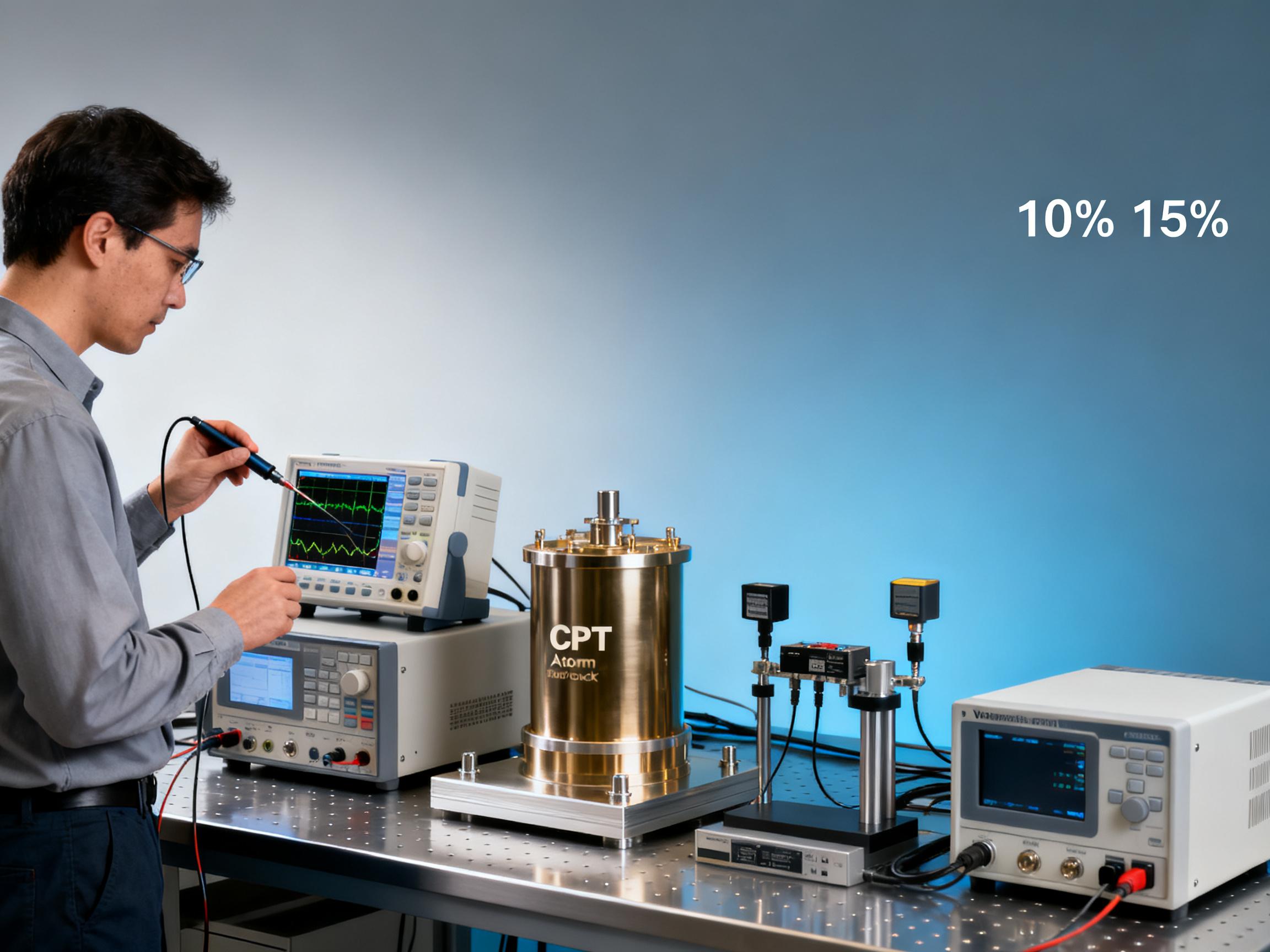RELATED
![How CPT Atomic Clocks Reduce OPEX in 5G Base Stations [Real Data] How CPT Atomic Clocks Reduce OPEX in 5G Base Stations [Real Data]](https://usimg.bjyyb.net/grey.png?x-oss-process=image/resize,m_fixed,w_800,h_600,limit_0) How CPT Atomic Clocks Reduce OPEX in 5G Base Stations [Real Data]2025-12-11
How CPT Atomic Clocks Reduce OPEX in 5G Base Stations [Real Data]2025-12-11 2024 CPT Atomic Clock vs Rubidium: Which Offers Better Stability for Telecom Networks?2025-12-08
2024 CPT Atomic Clock vs Rubidium: Which Offers Better Stability for Telecom Networks?2025-12-08 Live Demo Results: CPT Atomic Clock Performance Under Harsh Environmental Tests (Data Inside)2025-12-05
Live Demo Results: CPT Atomic Clock Performance Under Harsh Environmental Tests (Data Inside)2025-12-05 Budgeting for Precision: Total Cost of Ownership for a Rubidium Atomic Clock Over 5 Years2025-12-03
Budgeting for Precision: Total Cost of Ownership for a Rubidium Atomic Clock Over 5 Years2025-12-03
MESSAGE
Introduction
Precision timing is the invisible backbone of modern optical labs — and a Rubidium atomic clock can transform experiments, calibration, and network synchronization with unmatched stability and low power consumption. Whether you're evaluating a Rubidium atomic clock for research, training operators to handle a RubidiumOscillator, or advising procurement decisions, this article outlines seven concrete reasons labs in optical manufacturing should adopt one now. Expect clear ROI, improved measurement traceability, simplified maintenance, and scalable integration guidance tailored to researchers, users, and enterprise decision-makers. In the context of optical manufacturing equipment and laboratory operations, a Rubidium atomic clock delivers a compact, reliable, and cost-effective primary reference for frequency and time. That reference supports interferometry, spectral measurement, laser stabilization, and synchronized imaging. The Rubidium atomic clock combines atomic resonance stability with modern electronics, producing a disciplined oscillator that outperforms standard crystal oscillators in both short-term phase noise and medium-term frequency stability. For engineers and lab managers who evaluate timing solutions, the Rubidium atomic clock provides a balance between the high cost of cesium standards and the limited stability of oven-controlled crystal oscillators (OCXO). It integrates easily into rack systems, network time servers, and test benches. For operators, the RubidiumOscillator is straightforward to install, with familiar interfaces such as 10 MHz output, 1 PPS, and SNMP or RS-232/USB management. When procurement teams compare total cost of ownership, the Rubidium atomic clock stands out for low power, minimal maintenance, and long mean time between failures (MTBF), which matters in clean-room optical manufacturing where downtime is expensive. Many international labs rely on rubidium standards to maintain calibration chains that meet traceability requirements to national metrology institutes. Standards such as ISO/IEC 17025 and timing-related guidance from organizations like the IEEE and ITU reference rubidium-based solutions as appropriate secondary standards. If your lab routinely synchronizes distributed optical test rigs, the Rubidium atomic clock improves deterministic timing and reduces jitter-related measurement uncertainty. The RubidiumOscillator is also an ideal education and training tool; it exposes students and operators to atomic transition physics while delivering practical benefits. In short, the Rubidium atomic clock is not a niche instrument anymore — it is a practical, proven building block for modern optical manufacturing, research labs, and enterprise-level timing infrastructures.
What It Is, How It Compares, and Key Technical Considerations
Define it simply: a Rubidium atomic clock is a frequency standard that uses the hyperfine transition of rubidium-87 atoms to discipline an electronic oscillator. Compared to a free-running OCXO, the Rubidium atomic clock significantly reduces frequency drift over hours to days. Compared to cesium beam standards, the Rubidium atomic clock offers far lower cost, smaller size, and lower power consumption while providing sufficient stability for most optical lab needs. If you need better-than-ppm long-term accuracy without the infrastructure and expense of primary standards, the Rubidium atomic clock is the sweet spot. In technical terms, the Rubidium atomic clock delivers short-term stability characterized by Allan deviation typically in the 10^-11 to 10^-12 range at 1–10 seconds and mid-term stability suited for traceable frequency dissemination. The device is often specified with outputs such as 10 MHz, 5 MHz, 1 PPS, and 100 kHz, which directly feed synthesizers, phase detectors, and timing distribution amplifiers used in optical measurement systems. The RubidiumOscillator includes an internal cavity and lamp, microcontroller for lock management, and temperature compensation. Modern units implement holdover algorithms and aging compensation, reducing excursions during power transients. Integration considerations matter: choose a Rubidium atomic clock with adequate environmental ratings, low phase noise for interferometry, and interface options that match your lab’s control network (SNMP, NTP/GPS disciplining input, or direct frequency outputs). Consider the lab use cases. For calibration benches that compare lasers or optical frequency combs, the Rubidium atomic clock can serve as a local transfer standard. For distributed test systems, a Rubidium atomic clock feeding a timing distribution system or a PTP grandmaster improves synchronization across measurement nodes. For portable field testing of optical equipment, a compact RubidiumOscillator provides atomic performance without the weight and logistics of portable cesium standards. Also important: certification and traceability. Request calibration certificates traceable to an accredited national metrology institute and ask about recommended recalibration intervals—typical services range from 1 to 3 years depending on application criticality. Environmental controls matter: ensure vibration isolation and controlled ambient temperature for best performance. Finally, from a procurement perspective, evaluate not only the device price but also warranty terms, expected lamp life if applicable, and software support. The Rubidium atomic clock’s operational simplicity belies sophisticated internal control algorithms, but those features translate to lower ongoing operational burden for lab staff and procurement advantages for enterprise decision-makers.
Applications, ROI, Procurement Guide, and Standards
Application scenarios are diverse. In optical manufacturing and testing, a Rubidium atomic clock anchors frequency measurement of lasers, stabilizes interferometer reference arms, and synchronizes distributed imaging sensors for high-speed inspection. It also plays a crucial role in characterization of photonic devices and in building traceable calibration chains that comply with ISO/IEC 17025. Enterprise benefits are tangible: tighter measurement uncertainty reduces rework, shrinks calibration intervals, and supports faster time-to-market for precision optics. A clear ROI analysis compares capital costs with savings from fewer failed inspection cycles, reduced calibration downtime, and lower maintenance of laser stabilization systems. For procurement teams, follow this checklist: 1) Define required outputs (10 MHz, 1 PPS), 2) Specify phase noise and Allan deviation targets, 3) Confirm interfaces for monitoring and control, 4) Ask for traceable calibration certificates, 5) Evaluate environmental tolerances and rack compatibility, 6) Validate MTBF and recommended recalibration schedule. Use the table below for a quick vendor comparison that can guide tender documents and procurement specifications.
Standards and certifications reinforce confidence: request compliance information related to ISO/IEC 17025 for calibration labs, MIL-STD environmental guides for ruggedized units, and network-time protocols such as NTP/PTP when distributing time across a facility. The RubidiumOscillator can often act as a PTP grandmaster when paired with appropriate network cards, providing sub-microsecond synchronization for distributed optical tests. For critical optical metrology, integration with environmental sensors (temperature, humidity) and logging systems supports audit trails and traceable measurement records required by quality systems.
Maintenance, Training, Case Studies, and FAQ
Maintenance is straightforward relative to more complex primary standards. Typical tasks include scheduled recalibration, lamp checks on older rubidium lamp designs, firmware updates, and verifying output levels. Training operators is efficient: empower technicians to monitor status via front-panel indicators and network interfaces; teach them to interpret lock status, holdover alarms, and calibration reminders. A short training module (half-day) covers installation, verification using a frequency counter, and routine diagnostics. The Rubidium atomic clock reduces many operational pain points: fewer unscheduled calibrations, less drift to correct during laser alignment, and lower energy draw for continuous operations. Consider a real-world example: an optical component manufacturer replaced OCXO references across five production lines with a single rack-mounted Rubidium atomic clock feeding a distribution amplifier. The result: a measurable reduction in inter-line measurement variance, a 30% drop in out-of-spec returns, and a rapid payback through reduced rework and improved yield. In another academic lab, a network of imaging sensors used a RubidiumOscillator to synchronize exposures; the improved timing reduced jitter-induced artifacts and simplified post-processing pipelines. These cases illustrate how the Rubidium atomic clock acts as both a technical and business enabler.
- Frequently asked question: How often should I recalibrate a Rubidium atomic clock? Typical industry practice is 1–3 years depending on required uncertainty and application criticality.
- FAQ: Can a RubidiumOscillator replace GPS timing? In many indoor or shielded environments, yes — the Rubidium atomic clock provides stable local time for holdover when GPS is unavailable.
- FAQ: What environmental controls matter? Temperature stability, vibration isolation, and clean power significantly affect long-term performance.
Why choose us? We are a high-tech enterprise focusing on providing high-precision time and frequency products and all-round solutions to global customers. As an outstanding enterprise in the field of time and frequency, relying on SPACEON Electronics, an internationally leading listed time and frequency company, with its profound technical background and outstanding innovation capabilities, we enable global customers to build accurate, stable, low-consumption and safe space-time infrastructure. Our offering includes factory-calibrated Rubidium atomic clock units, turnkey integration services, training for operators to manage the RubidiumOscillator, and enterprise-grade support contracts. Contact us to evaluate a lab-specific solution: we will help you size the Rubidium atomic clock deployment, draft procurement specifications, and plan commissioning and recurrent calibration. Reach out to learn how a Rubidium atomic clock can become the timing backbone of your optical manufacturing lab — improving traceability, lowering operational risk, and accelerating throughput.
CONTACT US
Please use the form below to get in touch.
If you need a reply we will get in touch as soon as possible.

![How CPT Atomic Clocks Reduce OPEX in 5G Base Stations [Real Data] How CPT Atomic Clocks Reduce OPEX in 5G Base Stations [Real Data]](https://usimg.bjyyb.net/sites/91500/91958/1765179857856560163985903616.jpeg)



